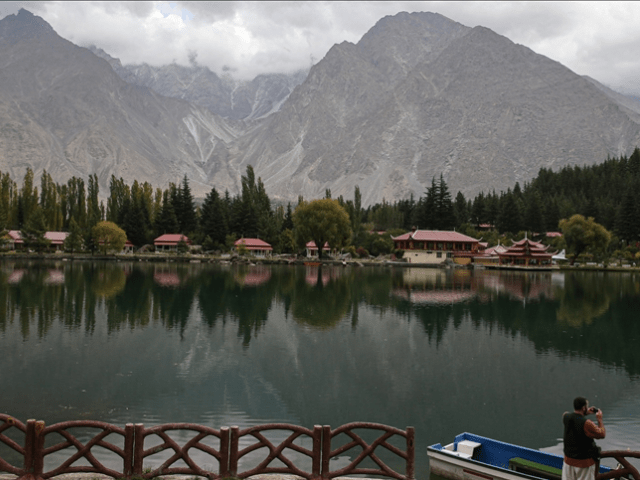The wetlands that ever prolonged Pakistan, for a long time, a sanctuary for millions of migratory birds fleeing Siberia’s brutal winters, are witnesses of a disturbing decrease in avian visitors.
Experts warn that a mixture of prolonged drought, the water levels they go back and the growing habitat degradation is moving away from these seasonal guests, some possibly forever.
The province of southern Sindh, a traditional favorite for migratory birds, has seen the most drastic decline. According to the 2024-25 Water Bird count of the Sindh Wildlife Department, the number of migratory birds fell abruptly 1.2 million in 2023 to 603,900 in 2024 and only 545,000 this year, an amazing fall of more than 50% in two years.
In 2023, the region experienced an exceptional influx of birds, driven by the persistent effects of the cadastrophic floods of 2022 that, although they devastated for the communities, temporarily revived the lakes, currents and lagoons of Pakistan.
Excessive precipitation had replaced many wetlands, which makes them ideal places for the birds that make the 4,500 kilometers (2,800 miles) of Siberia to India through the Flyling route of the Indo, with chills in several lakes and water deposits in Pakistan.
However, this year a different story tells.
“Sindh has long been a shelter for migratory birds due to their unique biodiversity and their many lakes, lagoons and other river paths,” Mumtaz Soomro, an official of the Sindh Wildlife Department of Sindh, told Anadolu Mumta, Anadolu, Anadolu, an official of the Sindh Wildlife Department of Life.
“But those numbers have seen a gradual decrease since 2023 due to water levels and droughts in decline.”
Soomro explained that the latest survey, which covers 40% of the territory of Sindh, found a notable shortage in the key habitats of the birds, including staining, Keenjhar, Hamal and Haleji Lagos, Nareri Lagoon and the Kutch Wildlife Sanctuary Rann.
These sites, some of which are wetlands of international importance certified by Ramsar, have been fundamental scales for migratory birds for decades.
“During the survey, our teams reported water shortage in most sites, including the Marshy Rann of Kutch Wildlife Sanctuary,” he said.
Shadow of past herds
Migration is seasonal, with birds that arrive at the end of August and leave in February. Among the more than 50 registered species were seagulls, wild ducks, chorlitos, snipers, cormorants, crane and storks.
The largest number of birds, 112,000, was seen in Nareri Lagoon, followed by 91,000 in Kutch ran.
But even these numbers are a shadow of past herds.
Zohaib Ahmed, a Karachi -based ornithologist, said that climate change is not the only factor that moves Pakistan’s migratory birds away, since the degradation of the habitat made by man, pollution and illegal hunt also play an important role.
“Human -induced changes and unbridled human interference, often in the name of development, have exposed these fragile wetland ecosystems to a series of threats,” Ahmed to Anadolu told Anadolu.
He stressed that if current environmental negligence trends persist, Pakistan could lose their status as a preferred stop for these avian travelers.
While the situation is particularly serious in Sindh, other provinces are also feeling the effects.
In Punjab, although the last survey is still underway, officials estimate a similar downward trend.
“The decline is not sudden. It is gradual, and the result of climate change, mainly water scarcity, seasonal alterations and persistent heat spells,” said Mudasser, attached head of the Wildlife Rangers Punjab Rangers.
Hasan confirmed that the health of Pakistan wetlands has deteriorated in recent years, largely due to climate -related changes.
“The arrival of these birds in Pakistan is a seasonal migration, and it has been disturbed due to seasonal disturbances,” he said.
Pakistan is among the 10 main countries worldwide more vulnerable to climate change, with experts that warn that erratic monsoon patterns, glacial fusion and growing temperatures are pressing the unprecedented pressure on natural ecosystems, including vital ones for bird migration.
Despite the alarming trends, some officials argue that threats such as poaching and capture have been controlled.
“The furtive hunters and hunters are there, but they do not represent a great threat to migratory birds. It is climate change what really pursues them,” said Hasan, adding that the provincial authorities have pressed the anti-Wildlife hunting laws in recent years.
But not everyone agrees.
Ahmed, the ornithologist, challenges this evaluation, particularly in Sindh: “At least for Sindh, I can say with guarantee that there are no drops in hunting and capturing migratory birds, especially in the Kirthar mountain range and Karachi’s coastal belt.”
He added that several migratory species are still being sold openly in illegal bird markets, undermining conservation efforts and contributing even more to the decline of birds.




